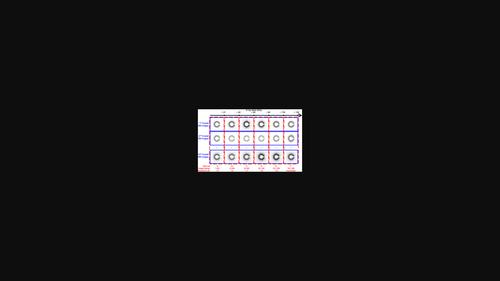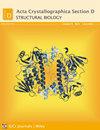XFEL structure of carbonic anhydrase II: a comparative study of XFEL, NMR, X-ray and neutron structures.
IF 3.8
4区 生物学
Q2 BIOCHEMICAL RESEARCH METHODS
Acta Crystallographica. Section D, Structural Biology
Pub Date : 2024-03-01
Epub Date: 2024-02-27
DOI:10.1107/S2059798324000482
引用次数: 0
Abstract
The combination of X-ray free-electron lasers (XFELs) with serial femtosecond crystallography represents cutting-edge technology in structural biology, allowing the study of enzyme reactions and dynamics in real time through the generation of `molecular movies'. This technology combines short and precise high-energy X-ray exposure to a stream of protein microcrystals. Here, the XFEL structure of carbonic anhydrase II, a ubiquitous enzyme responsible for the interconversion of CO2 and bicarbonate, is reported, and is compared with previously reported NMR and synchrotron X-ray and neutron single-crystal structures.

碳酸酐酶 II 的 XFEL 结构:XFEL、核磁共振、X 射线和中子结构的比较研究。
X 射线自由电子激光器(XFEL)与串行飞秒晶体学的结合代表了结构生物学领域的尖端技术,可通过生成 "分子电影 "实时研究酶的反应和动力学。这项技术结合了对蛋白质微晶体流的短时间和精确的高能 X 射线照射。碳酸酐酶 II 是一种负责二氧化碳和碳酸氢盐相互转化的无处不在的酶,本文报告了碳酸酐酶 II 的 XFEL 结构,并将其与之前报告的核磁共振和同步辐射 X 射线及中子单晶结构进行了比较。
本文章由计算机程序翻译,如有差异,请以英文原文为准。
求助全文
约1分钟内获得全文
求助全文
来源期刊

Acta Crystallographica. Section D, Structural Biology
BIOCHEMICAL RESEARCH METHODSBIOCHEMISTRY &-BIOCHEMISTRY & MOLECULAR BIOLOGY
CiteScore
4.50
自引率
13.60%
发文量
216
期刊介绍:
Acta Crystallographica Section D welcomes the submission of articles covering any aspect of structural biology, with a particular emphasis on the structures of biological macromolecules or the methods used to determine them.
Reports on new structures of biological importance may address the smallest macromolecules to the largest complex molecular machines. These structures may have been determined using any structural biology technique including crystallography, NMR, cryoEM and/or other techniques. The key criterion is that such articles must present significant new insights into biological, chemical or medical sciences. The inclusion of complementary data that support the conclusions drawn from the structural studies (such as binding studies, mass spectrometry, enzyme assays, or analysis of mutants or other modified forms of biological macromolecule) is encouraged.
Methods articles may include new approaches to any aspect of biological structure determination or structure analysis but will only be accepted where they focus on new methods that are demonstrated to be of general applicability and importance to structural biology. Articles describing particularly difficult problems in structural biology are also welcomed, if the analysis would provide useful insights to others facing similar problems.
 求助内容:
求助内容: 应助结果提醒方式:
应助结果提醒方式:


